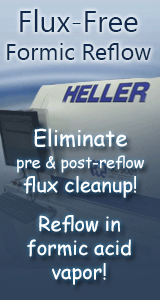Printed Circuit Board Assembly & PCB Design Forum
SMT electronics assembly manufacturing forum.
- SMTnet
- »
- Electronics Forum
- »
- Soldering to Immersion Tin surface finish
Soldering to Immersion Tin surface finish
![]() I am looking for info. (pro and con) and/or 1st hand knowled...
- May 11, 2001
by
EMS-Engineer
I am looking for info. (pro and con) and/or 1st hand knowled...
- May 11, 2001
by
EMS-Engineer
![]()
![]()
![]() Can anyone shed some light on this for me ?
Subject: Solde...
- May 14, 2001
by
EMS-Engineer
Can anyone shed some light on this for me ?
Subject: Solde...
- May 14, 2001
by
EMS-Engineer
![]()
![]()
![]() First, consider checking the fine SMTnet Archives. Look for...
- May 14, 2001
by
davef
First, consider checking the fine SMTnet Archives. Look for...
- May 14, 2001
by
davef
![]()
![]()
![]() We had a same problem before and Cirtech work with FAB suppl...
- May 15, 2001
by
We had a same problem before and Cirtech work with FAB suppl...
- May 15, 2001
by
- SMTnet
- »
- Electronics Forum
- »
- Soldering to Immersion Tin surface finish







